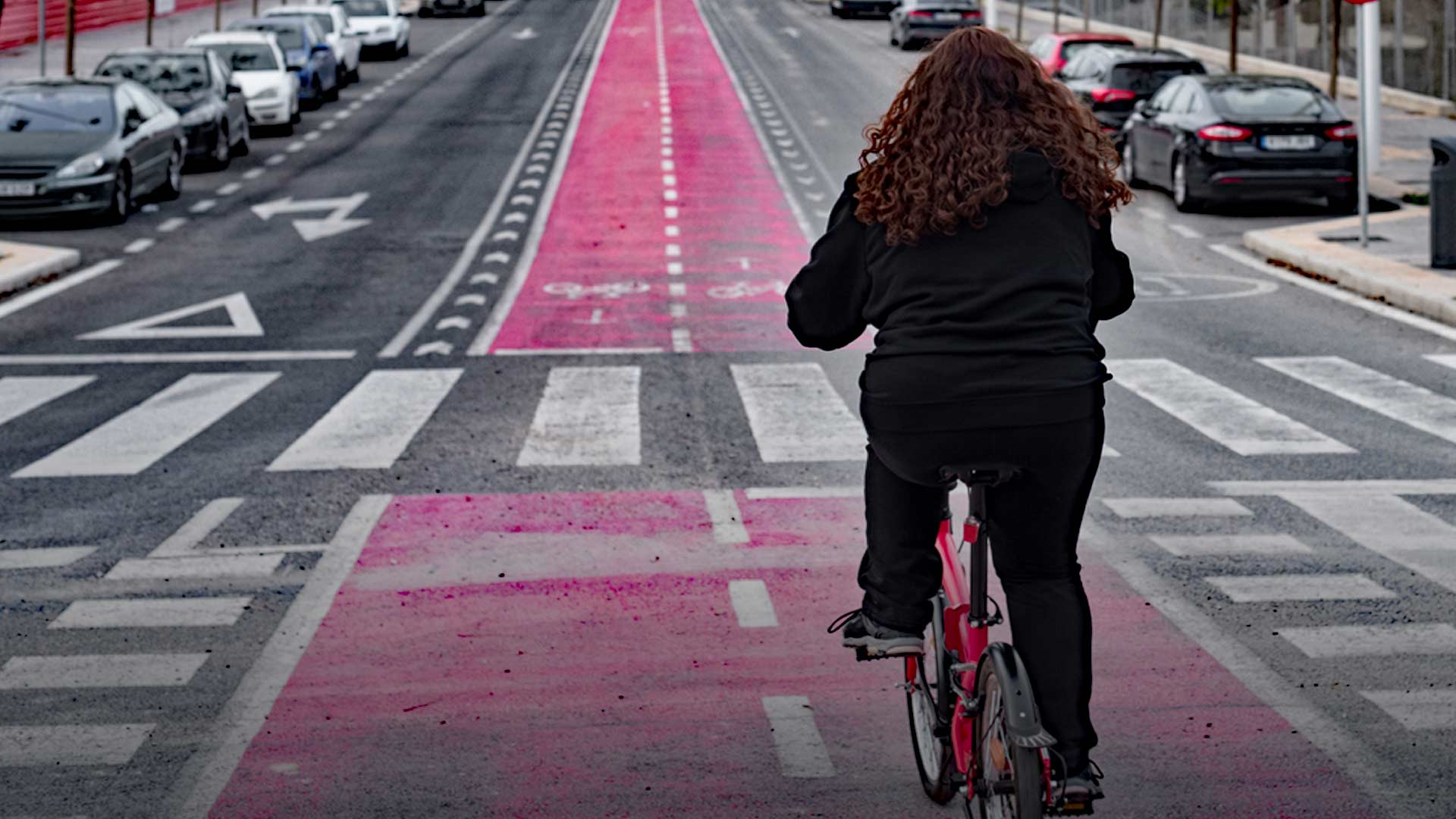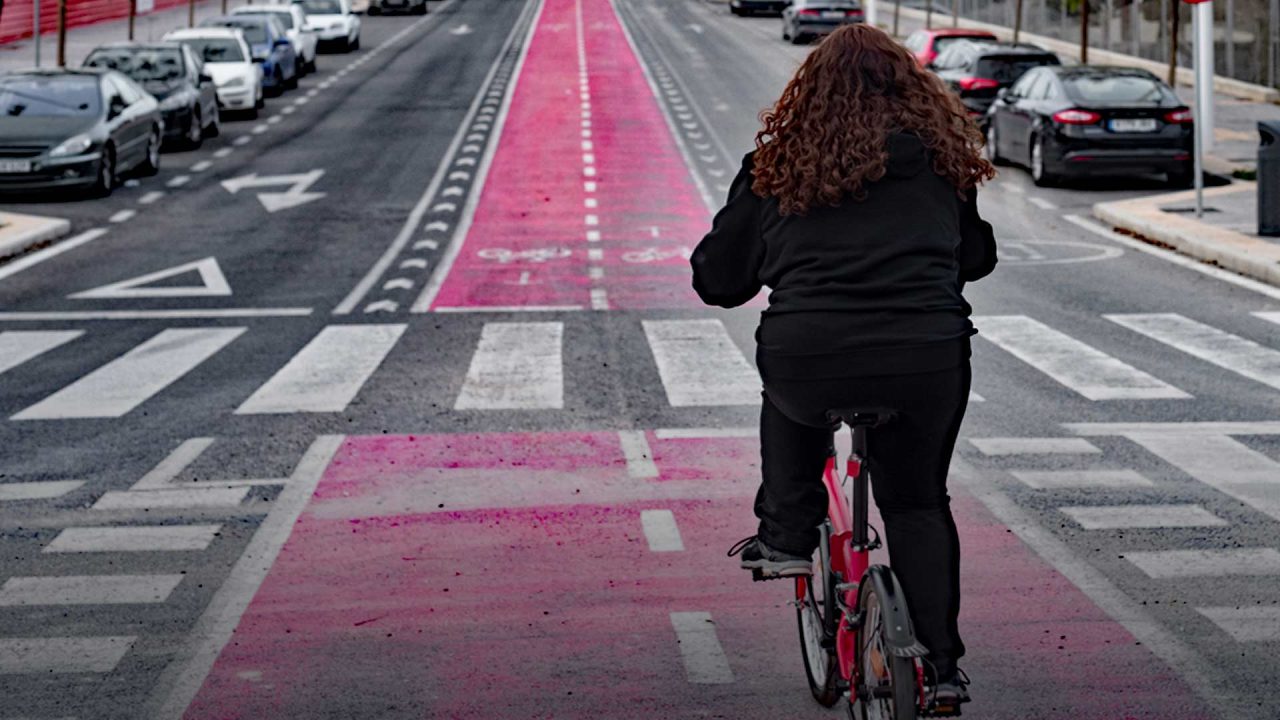
Environmental radicalism doesn’t need to be abrupt or physically confrontational in order to be radical. Take the supposed climate change threat for example.
As the New York Post highlights, the United Nations regularly warns the world about the need to take action for avoiding an imminent climate apocalypse. They’ve issued the warning every decade since the 1970s, each time giving the world about 10 years to accomplish the task. Likewise, the Anchorage Metropolitan Area Transportation Solutions’ (AMATS) Bicycle and Pedestrian Advisory Committee is also neither abrupt or physically confrontational, but whether intentional or coincidental, its agenda may be just as radical.
Given the duration and persistence of calls for climate action by numerous influential organizations, it should not be surprising that the repetitious propaganda has wormed its way into Anchorage transportation planning.
The Bicycle and Pedestrian Advisory Committee (BPAC) is the community forum for bicycle and pedestrian issues affecting Anchorage. This group is tasked with promoting public participation in the bicycle and pedestrian planning process and to comment on bicycle and pedestrian planning issues.
Ultimately, what is sought by those leading the Municipality of Anchorage, either intentionally or ignorantly, is an Anchorage that decays into a “pre-colonization” state of existence.
At a November 2022 meeting of this committee, a committee member celebrated how the recent elimination of municipal code parking minimum standards is “a way that cars are being de-centered in Anchorage as kind of, you know, they’ve always been the default and what we’ve prioritized for transportation. And this code change that would remove minimum requirements for building car parking would be one step towards acknowledging that cars don’t have to be the center of our universe, and they don’t have to be the center of our built environment, and, in fact, they are too much the center of those things.”
For environmentalists, the elimination of parking standard minimums is less about making downtown housing more affordable or improving the labor market for businesses – as it may later prove to be. Instead, for environmentalists, as a tool for making the use of personal vehicles in Anchorage less convenient, it simply represents another incremental win for the “green” movement.
Like the change to parking standards, Anchorage’s so-called “Complete Streets” idea represents additional examples of significant incremental transportation changes taking place within the city. However, before diving into Complete Streets, let’s understand more about the “why” and “how” behind these incremental changes.
The “why” can be associated with a future vision of Alaska that is driven by green politics and a desire to resurrect traditional land uses. It is not one that seeks equilibrium or homogony, which could alternatively be viewed as collaborative, constructive, and positive. Such a fusion could risk an amalgamation of so-called colonization and culture that advances Alaska for humankind. Environmentalists clearly do not desire that.
By gobbling up road right-of-way that could otherwise be utilized for motorized vehicle capacity, Complete Streets is another “little increase in friction to cars” that subtly shifts the balance representing incremental wins for radical environmentalism.
The “why” associated with green politics is self-destructive. As Alex Epstein, author of “The Moral Case for Fossil Fuels,” concludes recently in an interview on Fox News, “…the basic idea of ‘green’ is that you shouldn’t impact nature, so actually the green movement is hostile to every form of energy… The green energy movement is really an anti-energy movement… They’re against mining, they’re against building transmission lines, they’re against construction, and they’re against nuclear, they’re against hydro in addition to fossil fuels… It’s really an anti-energy, ultimately, anti-human movement that masquerades as a so-called green energy movement.” Similarly, land acknowledgement statements serve as an extension of this anti-human movement.
The Municipality of Anchorage has an official land acknowledgement statement it recites before each Assembly meeting. If you dive deep into the land acknowledgement movement, from Tuck and Yang, Decolonization is not a metaphor, you find that the ultimate goal of those advocating for decolonization is “to remind [others] what is unsettling about decolonization. Decolonization brings about the repatriation of Indigenous land and life; it is not a metaphor for other things we want to do to improve our societies and schools… The answers are not fully in view and can’t be as long as decolonization remains punctuated by metaphor. The answers will not emerge from friendly understanding, and indeed require a dangerous understanding of uncommonality that un-coalesces coalition politics – moves that may feel very unfriendly.”
Ultimately, what is sought by those leading the Municipality of Anchorage, either intentionally or ignorantly, is an Anchorage that decays into a “pre-colonization” state of existence.
ALASKA WATCHMAN DIRECT TO YOUR INBOX
This “why” is therefore compatible with the “how” of Complete Streets. According to AMATS, Complete Streets are those “designed, used and operated to enable safe access for all traffic (defined as pedestrians, bicyclists, motorists and public transportation users of all ages and abilities) to safely move through the transportation network.” Some proponents of Complete Streets might argue that such planning, design, and operation will relieve the demands of motorized vehicles on existing facilities. This may be true to a limited extent, but it is only a half-truth. Transit blogger Jarrett Walker explains it best in commenting on the 1961 book by transportation activist Jane Jacobs – “The Death and Life of Great American Cities.”
Chapter 18 of Jacobs’ book is titled, “Erosion of cities or attrition of automobiles.” In 2012, Walker writes, “This is how attrition of automobiles works. And apart from grand gestures like a freeway removal, it is mostly the work of small, steady work: little increases in friction to cars that subtly shift a balance. Jacobs coins the beautiful term attrition tactician – which conjures balding men in dark rooms under bright lamps, engineering the moving of curbs by a few inches each year. Only today are we seeing the emergence of the attrition strategist or even attrition visionary – charismatic figures like New York’s Jeanette Sadik-Khan or Sydney’s Mayor Clover Moore, who wage the battle on some scale and do not apologize for their feared traffic impacts, nor the imagined devastation to businesses that will result if some people shift to public transit or bicycles.” Thus, by gobbling up road right-of-way that could otherwise be utilized for motorized vehicle capacity, Complete Streets is another “little increase in friction to cars” that subtly shifts the balance representing incremental wins for radical environmentalism.
AMATS’ Bicycle and Pedestrian Advisory Committee has called a special meeting scheduled for 6:30 p.m. on Jan. 9 to consider AMATS draft Transportation Investment Program, Amendment 1. The committee appears intent on considering only these comments.
The views expressed here are those of the author.








20 Comments
This has got to be the most ridiculous piece that I’ve ever read
Seems impossible but a favorite Pushed by Force Dummer as the testimonys stack up at assembly for a CARLESS downtown Anchorage !!!! meets at the library two times a month normally……………they wont let you speak but it is GREAT entertainment and you get to meet alot of LAWYERS ! 5pm – 10ish
This just in from the Alaska Watchman bike lanes are now part of an “anti-human” movement designed to bring anchorage back to a radical pre-colonial age and end all use of man made energy.
More proof the writers of the Alaska Watchman belong in a mental asylum.
Then go elsewhere troll.
I guess Steve P Peterson can’t handle criticism. Why are conservatives always so fragile ?
Separation of Church and State, I highly suggest that you get that fat-tire bike of yours out and bike around Anchorage during the winter. Maybe you will discover how impossible Anchorage is to traverse by foot or by bike during the winter. Woke is making Anchorage Broke!
Lmao I walk to work 5 days a week, I guess conservatives are too lazy to use their own two feet now haha.
It wasn’t with fragility that Steve responded. It was common sense. If you don’t like what you read, then you’re free to move along. Do you leftists really need every opinion explained to you so you can fight against it? Who’s fragile in that scenario? That would’ve you.
The trolls are paid to wear people down. Make us tired of talking about stuff. Make us believe that we are in the minority with our beliefs – when in fact we are the majority. The squeaky wheel gets noticed the most; which is why the trolls will attack with full vengeance. Additionally, if the globalists can get us to focus on these petty issues, we might not notice the bigger picture, in which they are setting up more ways to knock our feet out from under us and by the time we notice, it is almost too late to stop them. The trolls will not stop; therefore, we cannot stop either.
Additionally, if we don’t respond, it will make it look like we don’t care. People who read these comments might think that no one cares and that no one if standing up to the globalists and trolls. We have to encourage people to get involved and stand up against the tyranny that is going to end humanity if we do not stop the globalist agenda.
Lucas Smith might improve his health by leaving his car at home every once in awhile.
There are many who are unable to ride bikes due to their physical conditions..I am one, and when they screwed up the bus system in 2017, they messed up/screwed several routes that have never been replaced..(i.e.)#2 and #36. The replaced bus routes never made the connections viable.
I agree! I know people affected by the removed routes.
Yeah when we blow into Las Anchorage firs weekend shopping trip, we’ll be sure to drop the truck off at the edge of turn and jump on our bikes. In January. Only narcissists think the world is all about them. Trying using some brain power.
If the little experiment proves effective limiting people, eventually businesses will move-out or die-out.
Bicycles are now radical environmentalism?
Interesting perspective but If indeed this possibility is really the intent of such a committee, it will never work well in any Alaskan city. I love to bike and my reasons in the past for biking to and from work were simply efficiently fitting in some exercise and I just plain liked biking. I also occasionally ran home from work as I also like to run. With that said, there are so many variables that work against such a non-motorized idea such as the myriads of people that physically cannot mobilize their bodies well either on foot or bike, our long snowy and very cold winters, and the expense of such modifications the certainly prohibit from any accelerated effort. Then also the negative impact on businesses. How will one carry home packages by bike or on foot? There does not seem to be much incentive foe businesses to locate themselves someplace with such limited access. All in all I do not see bike trails and access as a bad thing. In the winter we could ride our snow machines on them!
I think this is a little off the deep end. While cars will (and should) always have a place in Alaskan cities I don’t see why it would be such a bad thing to make walking, biking or (gasp!) public transit more viable ways to get around. Aside from the benefits to traffic and parking congestion, people would get much-needed exercise simply going about their lives. Part of the reason we have an obesity epidemic in this country is that no one walks anywhere.
I’m not suggesting a one-size-fits-all solution, as there are certain scenarios where a car is an absolute necessity and, for those of us who don’t work downtown, it is unlikely public transit in Anchorage will ever be a viable commuting option. It doesn’t need to work for everyone though, but if it makes a meaningful difference in traffic congestion I don’t see how it’s a bad thing. My one caveat is that any proposals regarding non-car transportation should not reduce road capacity in any way.
I agree with your view point AK Pilot about the walking. I remember as a kid, always walking or riding my bike to friends’ houses 5+ miles away or walking to the nearest town to get some candy. We walked to school every day rain or shine or in two feet of snow. What I have an issue with is that during the winter, Alaskan roads are icy and snow-covered making riding a bike or walking more dangerous. Now, if the globalists have their way, we will all be forced to move into 15-minute cities where you can only walk or bike – no vehicles. I feel that this new equity committee has been assigned to push us in the direction of those 15-minute cities, so anything they introduce is for a long-term agenda and we should not go along with their agenda.
I don’t know what is so radical about bike lanes. Seems like a wonderful idea to me.